Pomegranate trees, Punica granatum, are suitable for cultivation in USDA Hardiness Zones 7 to 11. They thrive in arid or semi-arid regions, producing an abundance of fruit in fall in ideal growing conditions.
The red, leathery pomegranates piled high on a produce table in the grocery store may all be of the same variety, but these fruits have a centuries-long history of breeding resulting in more than 500 known cultivars.
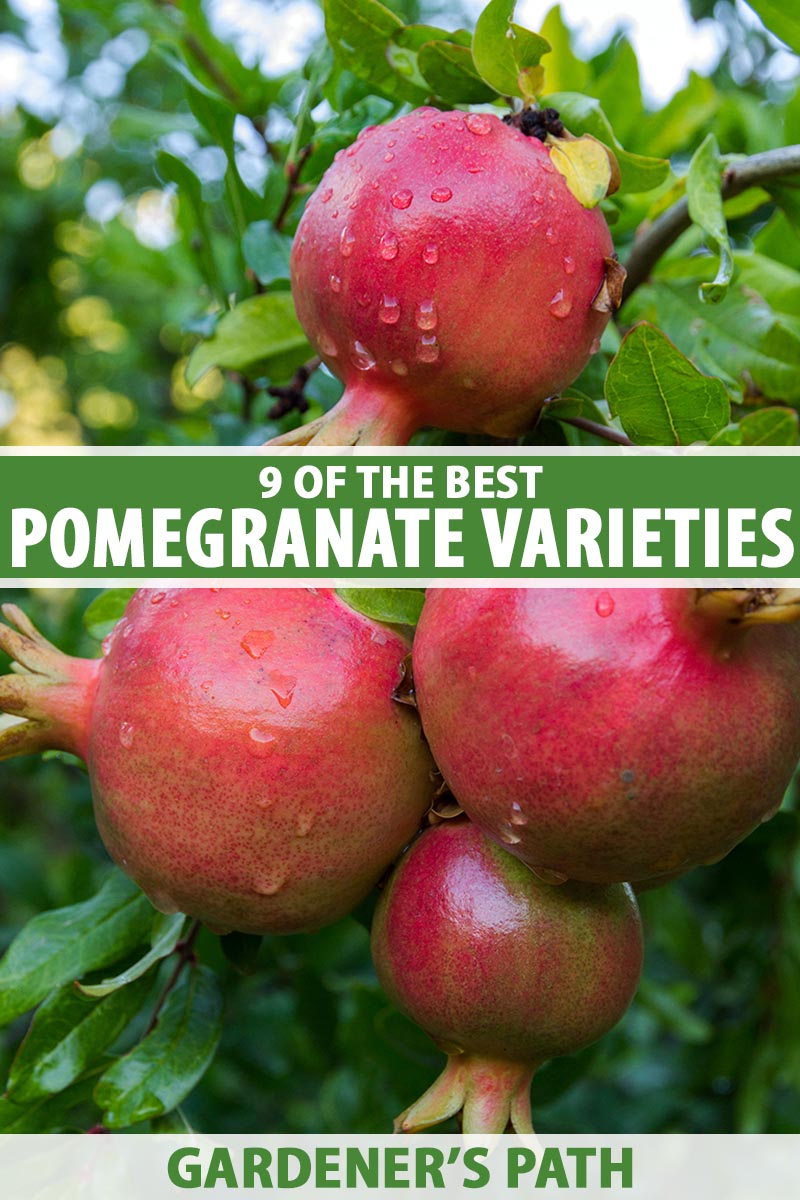
We link to vendors to help you find relevant products. If you buy from one of our links, we may earn a commission.
There is a wide range in flavor composition among fruits produced by the various cultivars, including some that are much sweeter than others.
The arils are classified as either soft, medium, or hard, depending on the texture of the flesh. Pomegranates sold in grocery stores in the US are typically the ‘Wonderful’ variety, which has medium to hard arils with a sweet-tart flavor.
Our guide to growing pomegranates covers how to cultivate these trees in your landscape.
In this article, we’ll take a look at nine of the best pomegranate varieties to grow at home.
Here’s what’s ahead:
9 of the Best Pomegranate Cultivars to Grow at Home
1. Eversweet
One of the sweetest varieties to grow at home, ‘Eversweet’ is a good choice for those who live in cooler regions where all of the pomegranates may not ripen fully prior to harvest, as even immature fruits still have a sweet flavor.
This eight- to 12-foot plant is well suited for garden or container growing with its six- to eight-foot spread, when trimmed as a shrub or pruned into tree form.
Healthy specimens will produce an abundance of red-orange blooms in spring and summer, with fruits following that are typically ready to harvest between August and October.
The pomegranates are large and pink to pale red, with pinkish, almost translucent arils that have very small interior seeds. The arils have a very soft texture and a hint of tartness underlying their exceptional sweetness.
You can purchase ‘Eversweet’ plants from FastGrowingTrees.com.
Plants in one- and three-gallon pots are available from Pixies Gardens Store via Amazon.
2. Kazake
If you’re looking for a cultivar that can withstand some colder winter temperatures and bounce back in the spring, the Russian ‘Kazake’ cultivar is the pomegranate for you!
This type can withstand winter lows down to -5°F. Potted plants that can be moved to a protected area if lower temperatures are expected can be grown as far north as Zone 4.
With a compact growing habit, this variety will only reach about six to eight feet at maturity, making it well suited for small spaces. It’s also a perfect choice for container growing as it won’t need as much pruning for size, compared to some of the larger options.
In spring and summer, the deep orange blossoms mature into medium to large fruits that can range from yellow-orange to light red. Because of its compact size, this variety can make a lovely productive hedgerow.
Ripe pomegranates, which are harvested between September and October, have sweet-tart arils that are deep red and medium textured, but the seeds are known to be rather hard.
‘Kazake’ plants are available in one-gallon containers from Yarden.
3. Purple Heart
If you live in a region that doesn’t experience a drastic drop in temperatures in the fall, then ‘Purple Heart’ is a good choice for you. This variety produces fruit that is typically ready for harvest in mid- to late October.
While the tree itself can tolerate temperatures below freezing, sometimes as low as 20°F, the fruit may not ripen in time to be harvested before temperatures plummet, causing potential crop loss. Fruits that freeze solid will most likely be ruined.
‘Purple Heart,’ also known as ‘Sharp Velvet,’ is a larger cultivar, reaching heights of 16 to 20 feet on average, with a similar spread. Size can be managed with frequent pruning, but it’s really best suited for areas with sufficient growing space.
Red-orange blossoms give way to large, dark red pomegranates that are packed with medium textured, semi-sweet arils.
The flavor is similar to that of the ‘Wonderful’ variety that you find in grocery stores, but with slightly lower acidity, and therefore, a less astringent taste.
You can order ‘Purple Heart’ plants in #1 containers from Nature Hills Nursery.
4. Red Silk
‘Red Silk’ is best known for its dwarf growing habit, making it a great choice for small space gardens or yards. At maturity, it generally tops out at six to eight feet tall.
It’s ideal for growing in containers or smaller gardens, and despite its compact size, this variety can still be a heavy producer.
Large red blooms and medium to large red fruits with medium to hard deep pink arils can be expected from ‘Red Silk.’
Pomegranates are typically ready for harvest between August and September. Their flavor is reminiscent of red berries, with a balanced sweet-tart taste.
This cultivar was bred by horticulturists at the University of California’s Davis College of Agricultural and Environmental Sciences.
‘Red Silk’ plants are available in #1 containers from Nature Hills Nursery.
5. Salavatski
One of the most commonly chosen varieties for bonsai, ‘Salavatski’ is a Russian variety that is also known as ‘Russian Red’ or ‘Russian Turk.’ This cultivar has a reputation for being very cold hardy, withstanding temperatures down to 0°F when tested.
The plants only reach eight to 12 feet at maturity, with an eight- to 10-foot spread, so they are easily maintained for compactness and fit into smaller spaces neatly.
They produce bright orange flowers in abundance through the spring and summer, with large, orange-red pomegranates following.
Fruits are filled with semi-sweet, deep red, juicy arils that have a hard texture, somewhat similar to store-bought pomegranates. They typically ripen between September and October.
You can find ‘Salavatski’ plants in one- or two-gallon pots available from FastGrowingTrees.com and from Perfect Plants Nursery.
6. Surh Anor
Another Russian variety, ‘Surh Anor’ is sometimes referred to as a “white” pomegranate. Fruits of this cultivar can range from pale yellow to pinkish-red, with arils that are nearly clear to pale pink, and soft to medium in texture.
The pomegranates begin to ripen in late October, but can continue to ripen through December in areas that do not experience winter lows below 60°F.
The flavor of the fully ripened fruit is said to be sweeter than that of some of the darker-fruited cultivars, with a slight tartness. The arils contain seeds that can be rather hard.
While these trees can withstand temperatures below freezing, immature fruits cannot, and will be ruined if they freeze solid.
A medium-sized tree, ‘Surh Anor’ can reach heights of up to 12 feet with a spread of eight to 10 feet at maturity.
‘Surh Anor’ plants are available in gallon-size containers from Yarden.
7. Texas Pink
‘Texas Pink’ is an attractive tree with a vigorous, upright growth habit. Reaching 10 to 15 feet tall at maturity, with a spread of eight to 10 feet, the dark green, glossy foliage contrasts beautifully with the bright red flowers.
Ready to harvest around October, the deep pink pomegranates have pink to red juicy soft arils with a sweet and slightly tart flavor.
Its upright habit makes a pleasing ornamental addition to the landscape or when pruned for size in containers.
You can find ‘Texas Pink’ in a variety of sizes, from two to six feet, available at FastGrowingTrees.com.
8. Tom’s Red
As an early-season variety, ‘Tom’s Red’ is one of the first to ripen.
Fruits are typically ready to collect in early fall, ahead of some of the other varieties, so if you’re in a region where cooler temperatures in the fall are a concern, this might be a good choice for you.
Bright, beautiful red blooms and large dark red pomegranates, with pinkish-red arils can be expected from ‘Tom’s Red.’ The arils are soft to medium with a sweet flavor that has a hint of tartness, ideal for juicing.
This cultivar can reach heights of 12 to 15 feet at maturity, with about the same spread, but can easily be pruned to a smaller size.
‘Tom’s Red’ plants in #1 containers are available from Nature Hills Nursery.
9. Wonderful
We’ve reached the end of our list of recommended cultivars with ‘Wonderful,’ the type most commonly sold in grocery stores.
‘Wonderful’ can grow to an average of 10 to 15 feet in height, with a six- to 10-foot spread. It’s a prolific producer, which has made it the top choice of commercial growers in the United States for many years.
This large tree or shrub bursts with crimson-red blooms in spring and summer, with large red fruits ready to harvest between September and October.
Fruits are filled with deep red arils that have a hard texture and a sweet-tart, berry-like flavor.
While ‘Wonderful’ can be grown in a container, it’s best suited for growing in an open space where you’re not fighting to keep it pruned and shaped – unless you’re up for that and want to keep it small.
‘Wonderful’ is available for purchase in three-gallon containers from FastGrowingTrees.com.
Perfect Pomegranates
Perhaps you’re suddenly considering where you might be able to fit a couple more plants. A potted plant on the porch, one planted near the mailbox – maybe you can train a few to create a hedge you never knew you needed?
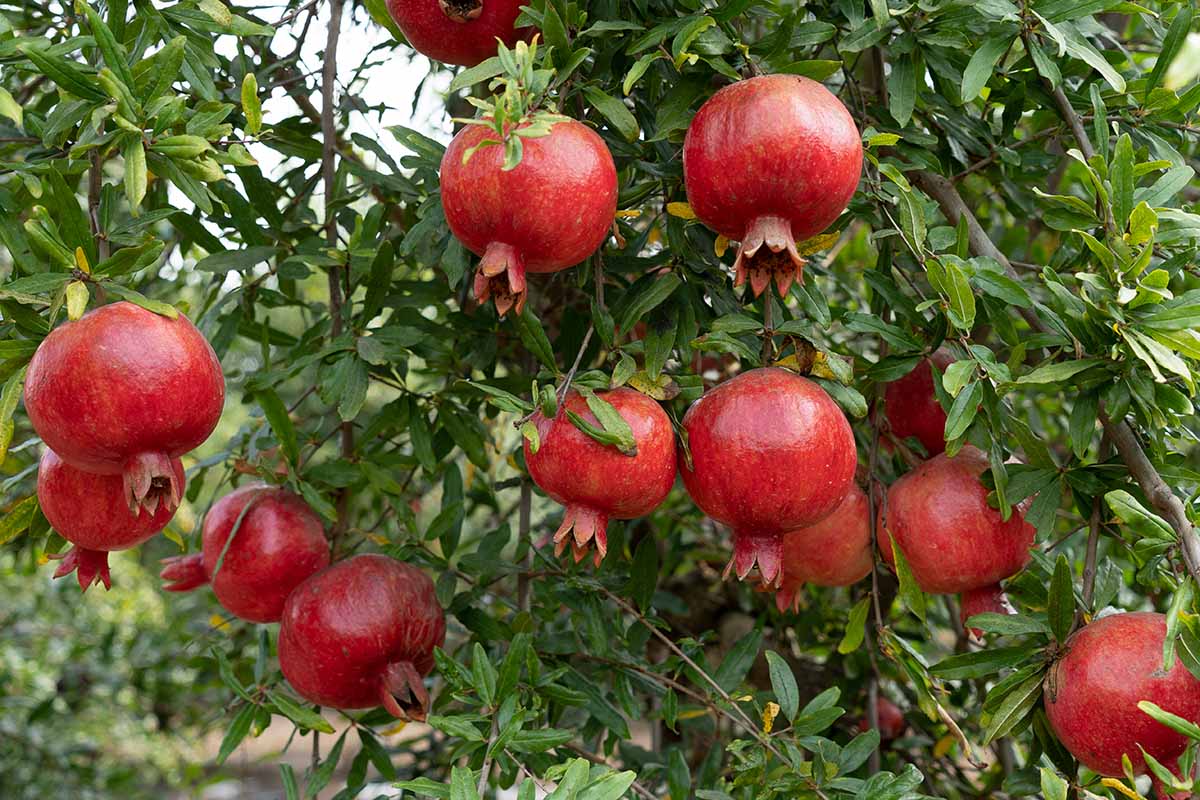
I know the feeling! It’s both a blessing and a curse to have a green thumb at times, but luckily, pomegranates are not only beautiful additions to the home landscape, but they are productive and useful as well.
What’s your favorite way to use homegrown pomegranates? Which variety are you growing? Let us know, and share some pictures with us in the comments section below!
And for even more information on growing and maintaining pomegranate trees, have a read of these guides next:
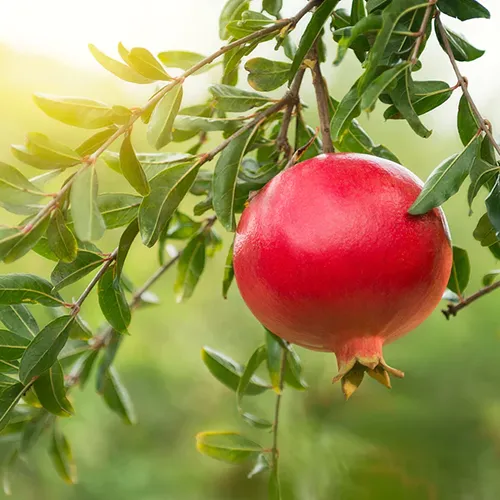


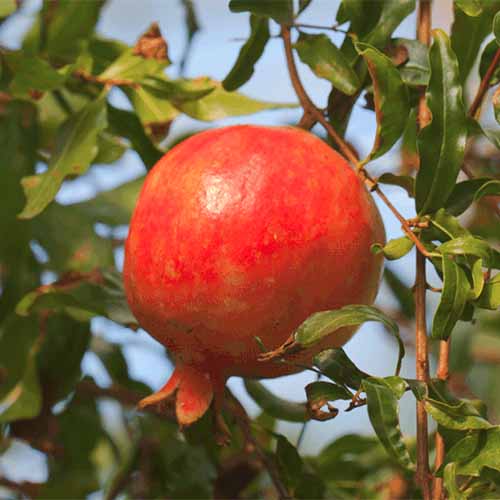


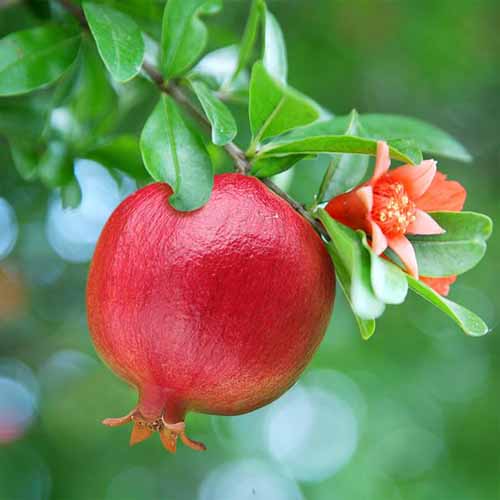

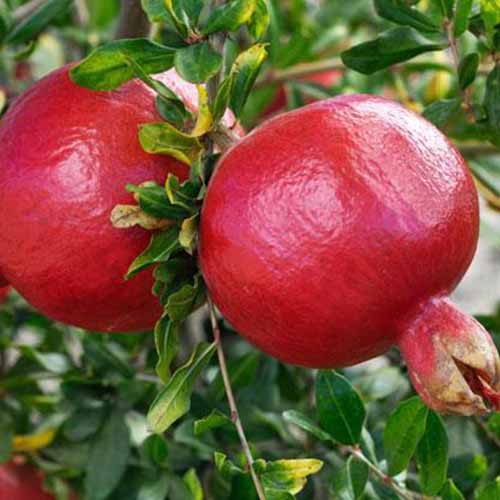
I live in zone nine I’m looking for a perfect pomegranate tree which would you suggest any hints on pruning
Hello J_tsuya
So glad to hear you’re on a quest for the perfect pomegranate! Most of those mentioned above should work in Zone 9, so be sure to get a good look at the nine presented.
As for pruning, give the pomegranate a chance to get established for the first year with no pruning. After that, be sure to prune in late winter, and prune away the suckers to keep the central growth healthy.
There’s more info on pruning pomegranates in our main guide, which you can find here.
Good luck!
My nursery is offering young pomegranate plants in 3 gallon pots that already have fruit on them. Since I live in Florida, it’s warm enough to plant them, but the nursery can’t tell me which variety they are. The color is very orange, rather than the red I see in most pictures. How can I find out which variety they are? Is there a good reference or website that shows details?? I want to make sure I get a full-size tree with tasty fruit, not the miniature nana variety. Thanks in advance. Judy
Can you share photos Judy? Lots of different varieties have a more orange coloration, including ‘Eversweet,’ ‘Salavatski,’ and ‘Parfianka.’
I live in Chicago zone 5B/6A. I’m looking for a pomegranate tree that will work for my zone and can fruit this summer 2023.
This might be possible in Chicago indoors or in a greenhouse, and varieties like ‘Russian’ or ‘Wonderful’ may work in containers if they can be moved to a protected patio or indoor space through the winter. But unfortunately most varieties of pomegranates will not do well in your area – they are best suited to dry, hot climates in Zones 7 to 11 and require a long growing season, allowing about five to seven months for the fruit to develop and mature. In suitable growing zones, most trees will not produce a harvest for two to five years after planting.… Read more »
We had an inexperienced lawn boy who weed whacked the outer trunks of both of my 2 year old Texas Pink Poms. Now those two or three trunks are completely dead. I just pruned them out. Do you think they will still fruit? Or should I replace them with new bushes/trees? Thank you
Sorry to hear it, Sarah! Can you share photos? I’m not sure what size they were to start with and I can’t say for sure based on this description whether they will be able to withstand this type of damage. Young plants that are still alive at the crown will often go on to produce healthy new growth if given time to recover. Of course, if they are completely dead as you described, removal and replacement may be your best option.